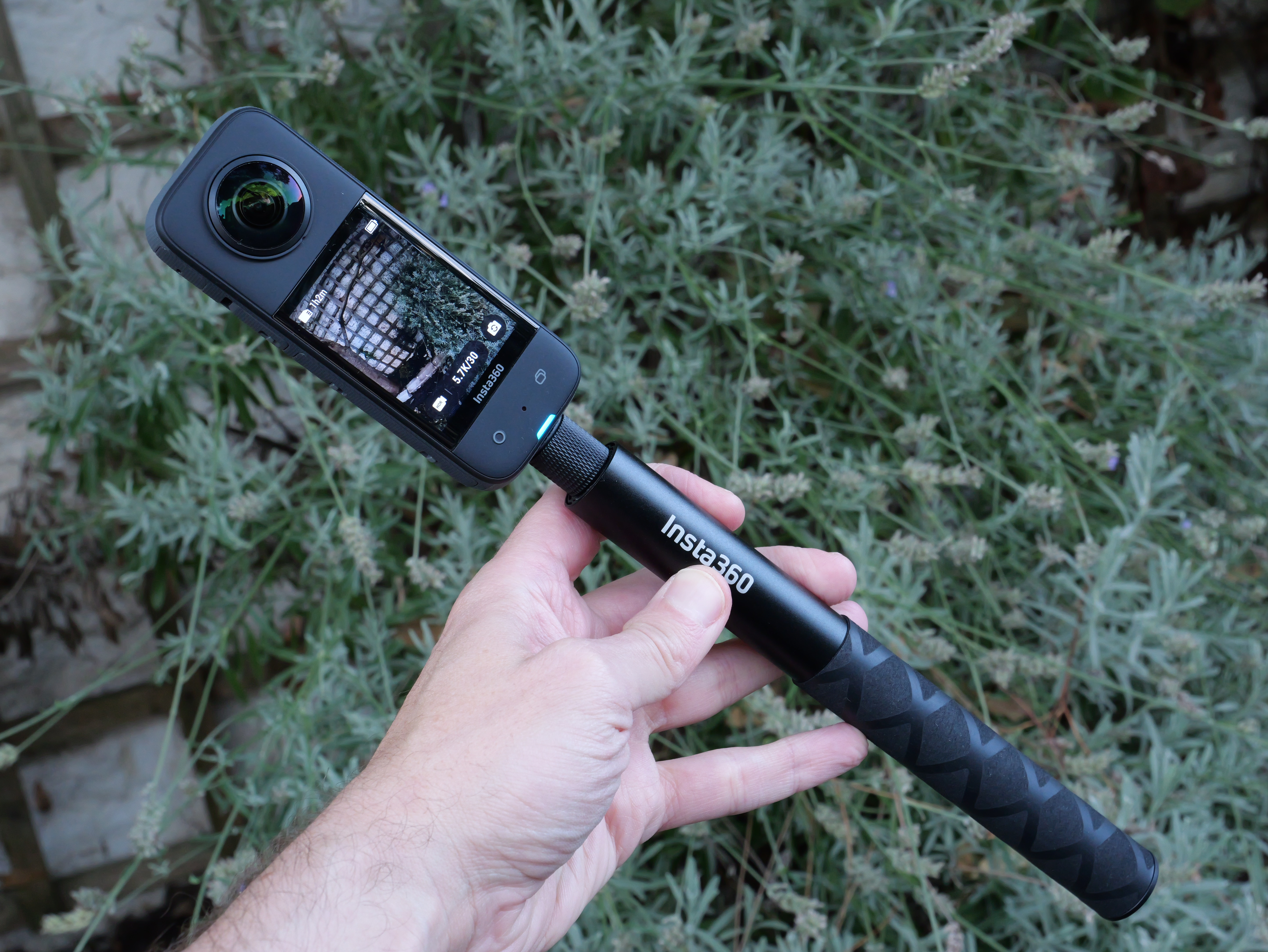
Insta360 X3 review in a sentence: The Insta360 X3 is the best 360 action camera to buy today, thanks to the small but significant improvements over the X2.
Insta360 has firmly installed itself as the king of a particular niche: 360 action cams. With its X and One range, the Chinese company specialises in small, lightweight two-lensed cameras that film or photograph everything around them, allowing the user to reframe later.
These are ideal for situations where you want to concentrate on your own movement and positioning rather than worrying about whether the camera is capturing your best side, making them prized by extreme sports fans looking to document their sweaty, gravity-defying exploits for posterity.
With the new X3, Insta360’s mainline 360 camera range just got its first generational update since 2020’s Insta360 X2. Let’s see how this fresh arrival shakes things up and where it sits in relation to the best action cameras currently available.
[First reviewed Oct 2022]
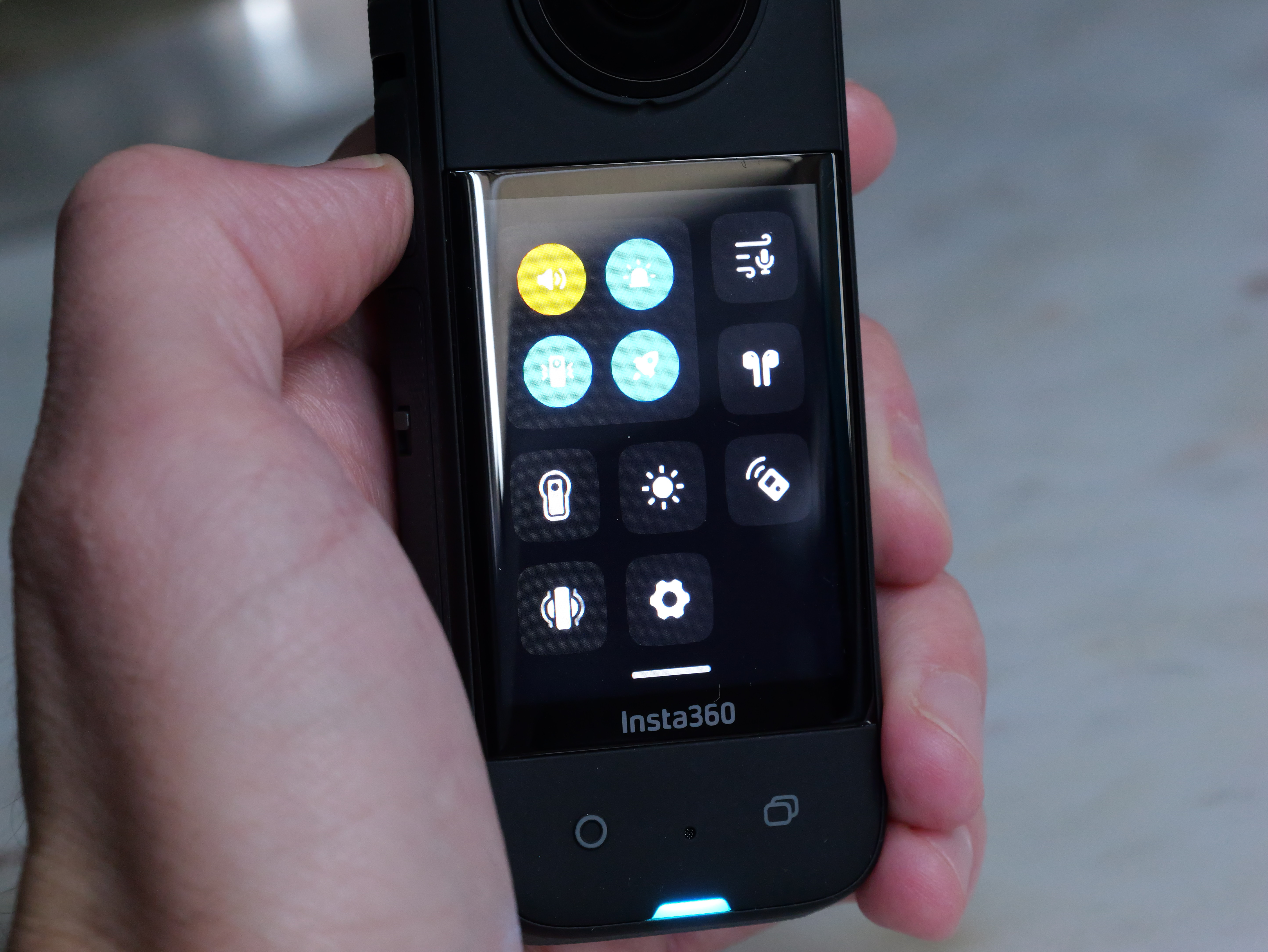
Insta360 X3 review: Design and setup
At first glance, the X3 looks a lot like the X2. There’s the same candy bar design with curved edges, a matt black rubbery finish and the tell-tale twin wide-angle lenses bulging out slightly at the top. But there’s one major difference here: the X2’s tiny circular display has been replaced on the X3 by a much larger 2.29-inch rectangular touchscreen designed to make browsing menus and recordings easier. That’s a good start.
The X3 also features a removable battery which, when taken out, reveals a slot for a Micro SD card. Another flap gives access to the USB-C port that the X3 uses for charging and file transfer purposes. Both these doors are waterproof, and like its predecessor the camera can be submerged to a depth of 10m without the need for a separate case. The basic X3 kit does come with a soft protective case, though, and this will keep the lenses covered and scratch-free while the camera is in your pocket or bag.
Weight: 180g
Dimensions: 114 x 46 x 33.1mm
Video: 5.7K/30fps, 4K/60fps
Photo: 72MP/11968 x 5984
ISO range: 100-3200
FOV: 360º
Aperture: f/1.9
Connectivity: USB-C, Bluetooth 5.0 LE, 2.4/5GHz Wi-Fi
App: Insta360
Battery: 1800mAh
Operating time: 81 minutes
GPS: No
Stabilisation: Electronic
Storage: Micro SD card (up to 1TB)
Live streaming: Yes (via app)
The X3 is lightweight and compact enough to fit in a small jacket pocket, but its design and grippy rubberised exterior make it fit nicely and securely in your hand. You’ll often be using it mounted on a selfie stick or other accessory, though, and it features a standard tripod thread on the bottom for that purpose.
Setup is simple. While you can use the camera without one, you’ll need a smartphone running the Insta360 app if you want to get the best out of it. To get them paired up, open the app and choose the option to connect with a new camera, then tap the X3 when it appears. This will then ensure firmware is up to date and allow you to quickly reconnect the devices via Wi-Fi in future.
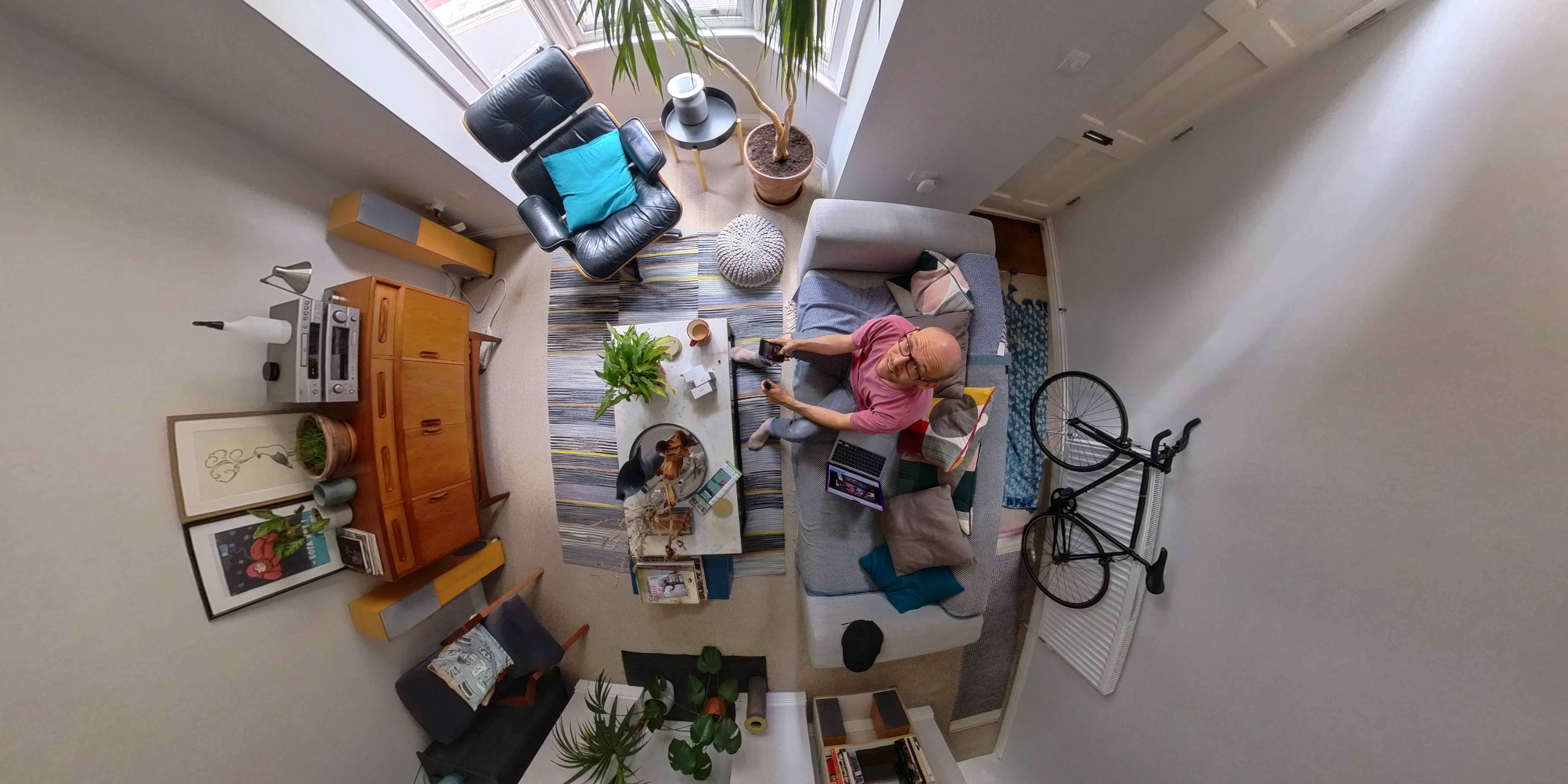
Insta360 X3 review: Features and usability
The X3 comes with a range of handy features, although not a huge amount of new stuff compared with the X2. The X3 retains superb auto-levelling and image stabilisation technology, which uses gyroscope data to keep your footage smooth, lined up with the horizon and far less likely to make a viewer queasy. It also keeps the ability to remove a selfie stick from footage and photos, giving the impression that the camera is self-suspended in mid-air, drone-like, rather than attached to a pole.
The huge range of shooting modes remains too, giving users the ability to capture Matrix-like bullet-time sequences; time-, star- and hyper-lapses; HDR photos and videos; looped recordings (aka dashcam mode); and videos in vivid, standard and log picture profiles.
There have been slight improvements made to some of the above though, as well new additions. Perhaps the most significant new feature is the 4K single-lens mode, which turns off one of the two camera modules to provide a more traditional action cam field-of-view. Here, video can be recorded in 4K quality at up to 30fps, or at lower 3.6K, 2.7K and 1080p resolutions at up to 60fps. There’s also a new vlogging-centric “Me Mode” shooting setting, which keeps the user automatically centred (and selfie stick hidden) in a 180-degree video – it makes things a bit simpler than on previous X cameras, where you’d have to shoot in 360 and reframe these videos to keep yourself centred.
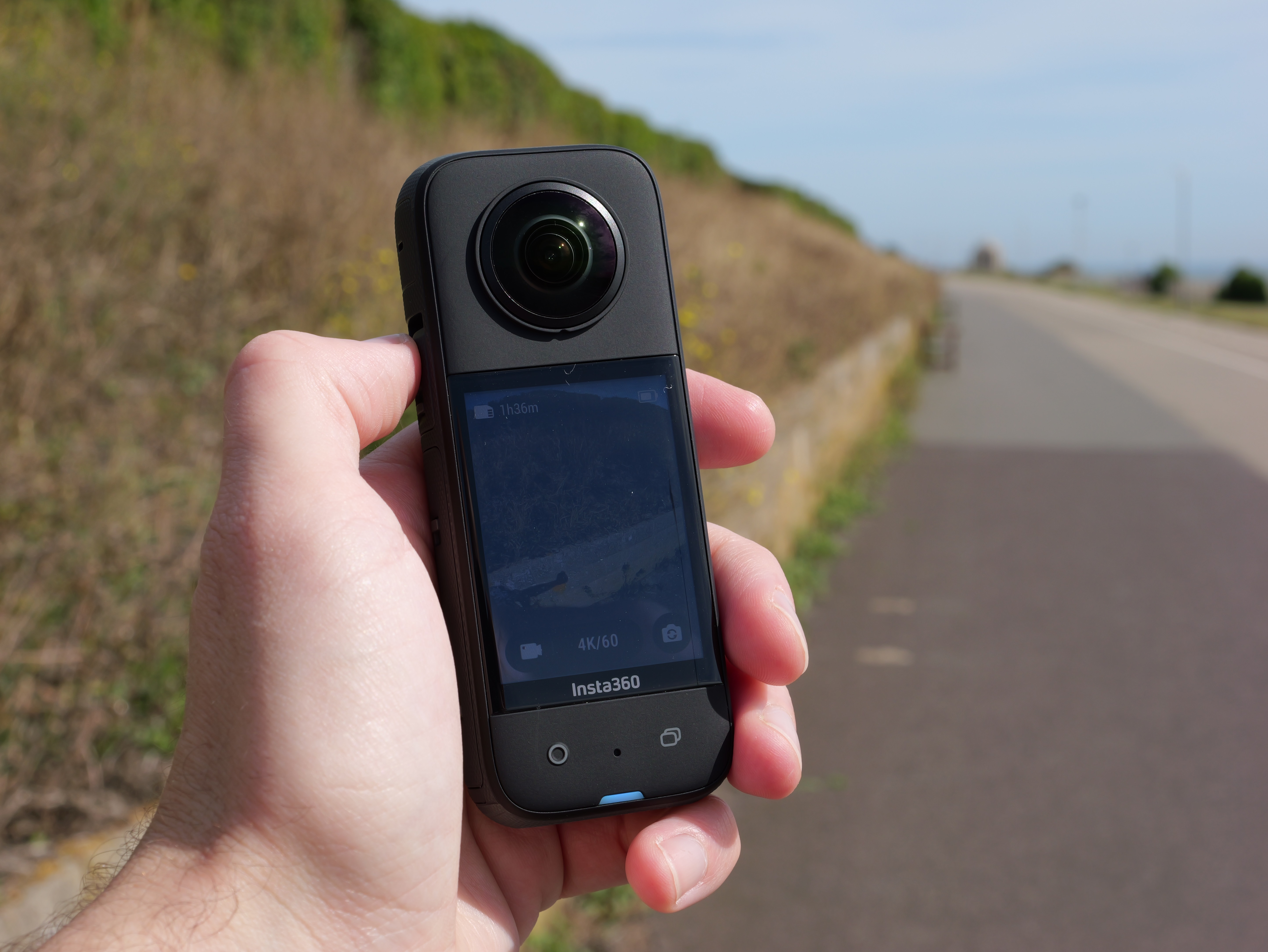
In terms of usability, things are solid. The physical buttons on the camera don’t have a lot of travel, so it might be a bit tricky to use them if you’re gloved up while skiing or similar, but with bare fingers they work a treat – and vibration feedback helps to let you know that your presses have been registered.
Wi-Fi speed has been improved over the X2, resulting in file transfers that are up to 50% faster. Battery life is also worth a shout, as despite the sheer amount of data being captured by those twin lenses and sensors, you can get almost an hour and a half of continuous use out of the camera before you have to recharge or swap batteries.
Finally, the Insta360 smartphone app works well. While not as slick and solid as some imaging apps, it’s improved a lot over the last couple of years and offers users a huge range of hints, guides and effects to use in order to create and share interesting sequences shot with the X3. I personally preferred editing my 360 videos on the Insta360 Studio desktop app to using the mobile app, but as a method for controlling the camera remotely the mobile app is more than up to the job.
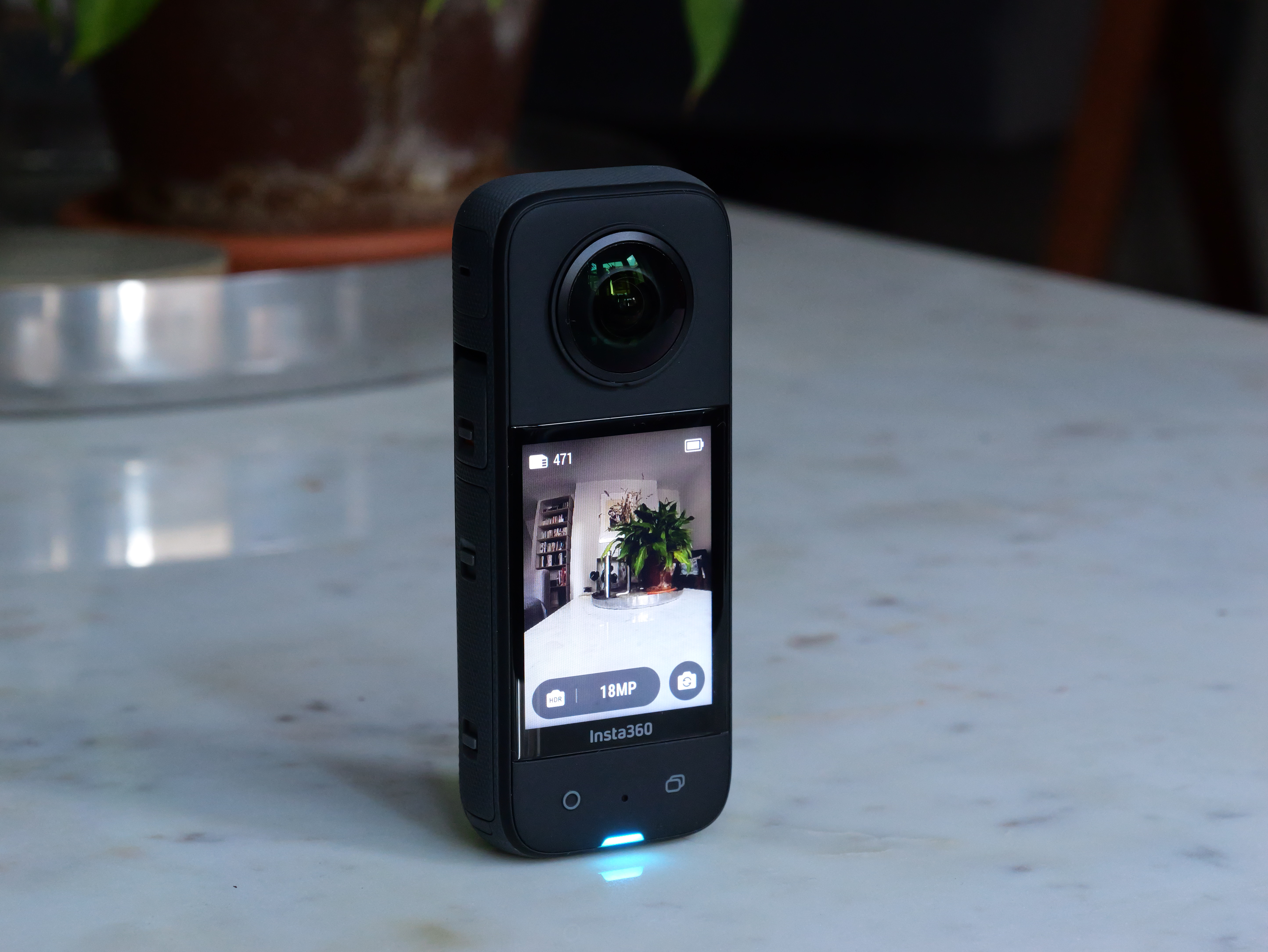
Insta360 X3 review: Image quality
With the X3 packing new sensors and improved lenses (they go from the X2’s f/2.0 aperture to a slightly brighter f/1.9 here), we were hoping for a generational leap in image quality over the X2.
The bad news? We don’t get that. While the X3 is certainly an improvement on its predecessor in terms of dynamic range, it retains the same 5.7K maximum resolution and frame rates for general 360 video. These videos look crisp and punchy when shot in bright daytime lighting but in trickier conditions there’s a softness and smear to them (which, to be fair, is something we’ve seen with all of this type of small 360 camera).
When viewing footage on small smartphone screens, this isn’t bad at all, but pixel-peepers will notice it plenty on larger screens, and if you’re a ‘serious’ videographer trying to shoot 360 footage to integrate into your lush-looking films shot mostly on mirrorless cameras, the difference in quality will be quite stark.
Perhaps expecting too much from a pocket-sized camera is unfair, and as we say the X3 does improve on the X2. 360 stills, for instance, can now be shot at 72MP resolution rather than the X2’s 18MP, and the new Active HDR video mode allows it to capture detail and highlights and shadows with image stabilisation applied.
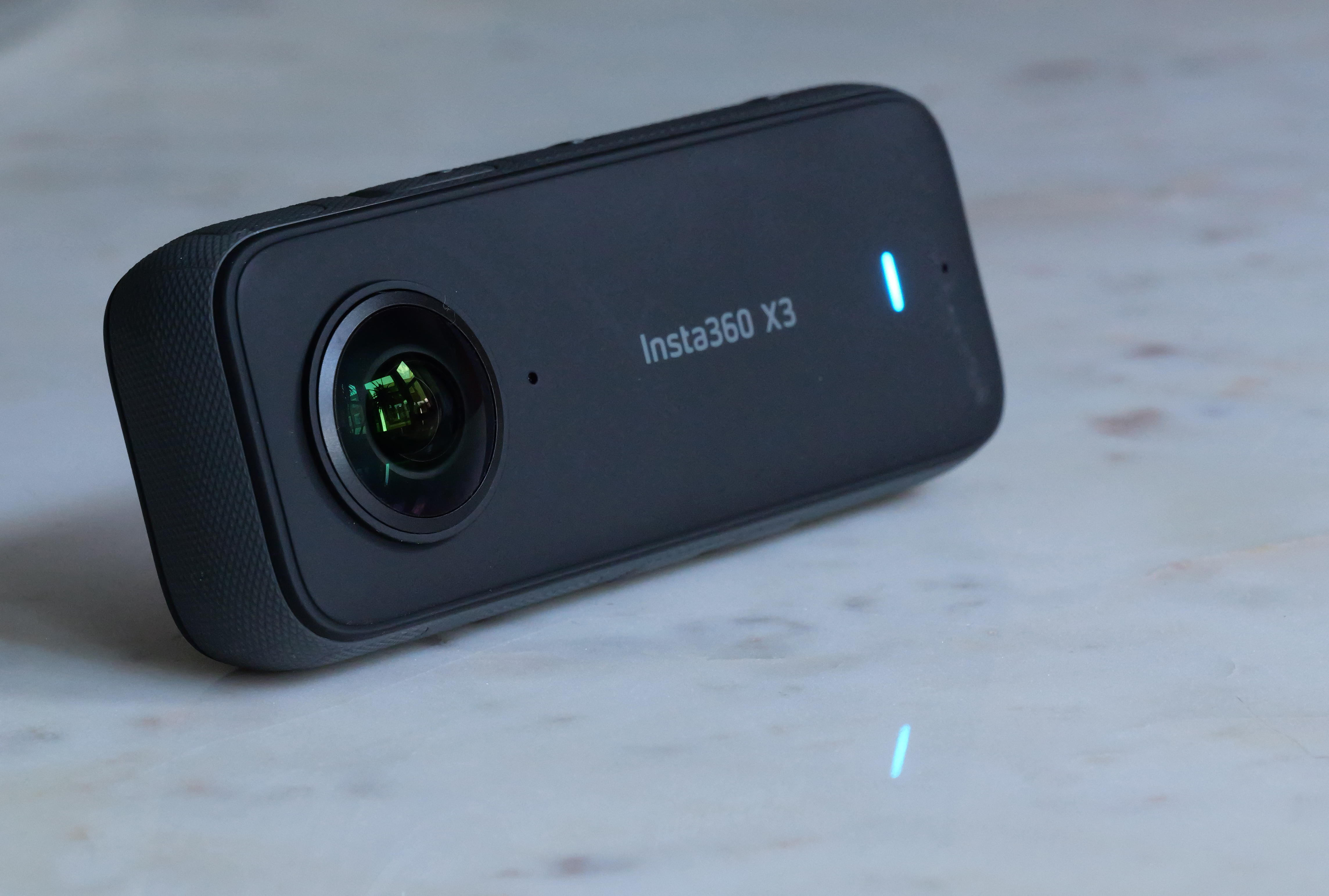
Insta360 X3 review: Verdict
While the Insta360 X3 isn’t a great leap forward over its predecessor (and we wouldn’t advocate buying it if you already own an X2), it’s definitely a marked improvement in many areas, particularly the screen, while retaining the great features and rugged, compact design that made the X2 so likeable and fun to use. If you’re looking for a first foray into the world of 360 video and photos, the X3 is the ideal entry point.







